Starbucks’ 95,000 baristas have a competitor. It doesn’t need sleep. It’s precise in a way that a human could never be. It requires no training. It can’t quit. It has memorized every one of its customers’ orders. There’s never a line for its perfectly turned-out drinks.
It doesn’t require health insurance.
Don’t think of it as the enemy of baristas, insists Kevin Nater, CEO of the company that has produced this technological marvel. Think of it as an instrument people can use to create their ideal coffee experience. Think of it as a cure for “out-of-home coffee drinkers”—Nater’s phrase—sick of an “inconsistent experience.”
Think of it as the future. Think of it as empowerment. Your coffee, your way, flawlessly, every time, no judgments. Four pumps of sugar-free vanilla syrup in a 16 oz. half-caff soy latte? Here it is, delivered to you precisely when your smartphone app said it would arrive, hot and fresh and indistinguishable from the last one you ordered.
Kitchens are just factories we haven’t automated yet

In a common area at the University of Texas at Austin, the Briggo coffee kiosk, covered in fake wood paneling and a touch screen and not much else, takes up about as much space as a pair of phone booths. Its external appearance was designed by award-winning industrial designer Yves Behar, with the intention that it radiate authenticity and what Briggo says is its commitment to making coffee that is the equal of what comes out of any high-end coffee shop.
The kiosk at the university is the second version, the one that will be rolling out across the country in locations that are still secret. It needs just 50 square feet (4.6 sq m) of floor space, and it can be dropped anywhere—an airport, a hospital, a company campus, a cafe with tables and chairs and WiFi just like Starbucks. It’s manufactured in Austin.
Inside, protected by stainless steel walls and a thicket of patents, there is a secret, proprietary viscera of pipes, storage vessels, heating instruments, robot arms and 250 or so sensors that together do everything a human barista would do if only she had something like perfect self-knowledge. “How is my milk steamer performing? Am I a half-degree off in my brewing temperature? Is my water pressure consistent? Is there any residue buildup on my brewing chamber that might require me to switch to a backup system?”
The Briggo coffee kiosk knows how to make a perfect coffee because it was “trained” by an award-winning barista, Patrick Pierce. He’s since left the company, but no matter: as in the techno-utopian Singularity, whose adherents believe that some day we will all upload our brains to computers, once a barista’s essence has been captured by Briggo, his human form is just a legacy system.
Besides, baristas, especially the ones at America’s favorite “high end” coffee shop, don’t often stick around long enough to become as good as Pierce. Turnover at Starbucks, which is typical of all demanding retail environments, leads to what Nater calls “variation,” and not the kind that’s exciting—the kind that coffee connoisseurs frown upon, because it means coffee isn’t being extracted from beans in the optimal way.
“What we’ve created is in essence a small food factory that absolutely replicates what a champion barista does,” says Nater. Briggo roasts its own beans—sourced by a pair of coffee supply veterans who between them spent a combined 40 years at Starbucks. “We have calibrated this machine to pull espresso shots to the same specification as an Illy or a Stumptown or an Intelligentsia. We’ve just done it without the human element.”
It’s 2020, and waiting in line for coffee is about as popular as waiting in line for bread
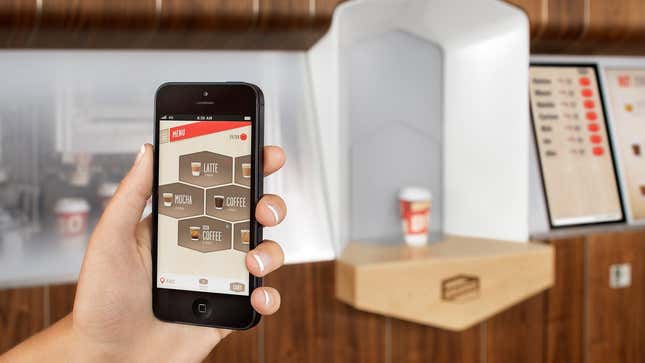
Ever stood in line at a Starbucks or some other cafe and wondered why, in the year 2013, you can’t just send in your order 10 minutes early via an app on your phone, and pick it up as soon as you walk in? Briggo has such an app. It asks you to log in, so it can memorize your order and payment information, which enables one-click coffee ordering. Or you can order a coffee for a friend. And use the app to check out how long the wait is for a drink. Fifteen minutes? Just complete your order now, while you’re walking across campus—it will be ready by the time you arrive. Hit another button to announce on Facebook that you’ll be at the Briggo kiosk by 9:30, and hey, who wants to meet up?
Some experiences viral-market themselves.
“What we find at [the University of Texas] is that we have a younger generation of consumers who have no inhibition about ordering remotely and having self service,” says Nater. “Coffee shops are a great social interaction point, but so is social media.”
Had a great experience at Briggo? Why not tweet that? Invented a new combination of syrups and brew temperatures and other elements that yields the perfect drink? Tweet that, too. Briggo will make you an espresso, a latte, even an iced coffee made with a cold-brew process, something even many coffee shops don’t offer because it’s time consuming to produce. Not a coffee drinker? How about a chai latte, an ice chai latte, hot chocolate, or milk steamer?
High-end restaurants automated coffee production and no one noticed
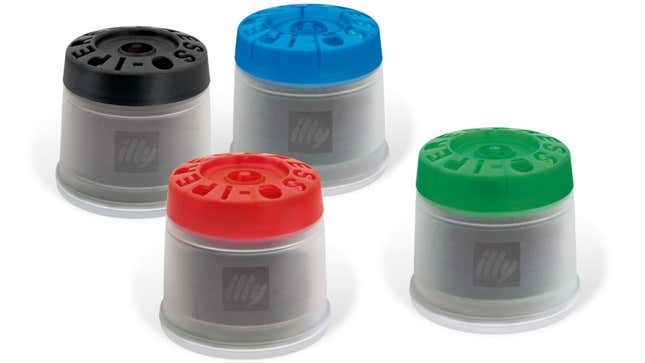
In 2012, Julian Baggini, a British philosophy writer and coffee aficionado, wondered why dozens of Europe’s Michelin-starred restaurants were serving guests coffee that came out of vacuum-sealed plastic capsules manufactured by Nespresso. So he conducted a taste test on a small group of experts. A barista using the best, freshly-roasted beans went head to head with a Nespresso capsule coffee brewing machine. It’s the tale of John Henry all over again, only now it was a question of skill and grace rather than brute strength.
As the chefs at countless restaurants could have predicted, the Nespresso beat the barista.
Capsule coffee systems make consistent only two steps in the coffee-making process, but they’re the most important ones: Roasting and brewing. Beans roasted in a factory don’t change from the moment they’re vacuum-sealed into a capsule, because oxygen is the agent that causes food to go stale. (By contrast, beans roasted “fresh” are oxidizing continuously, until they’re brewed.) And the coffee-brewing process is complicated enough that achieving its most perfect expression requires a machine free from human interference.
“With a pre-dose capsule, it’s always the right grind,” says Mark Romano, a senior director at Illy coffee, which makes its own line of capsule coffee systems. “And with a self-contained extraction chamber, you can consistently get to 80-90 [out of a quality scale of 100].”
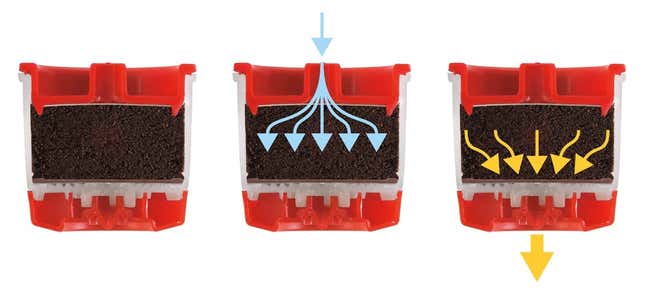
Capsule brewing systems can now control more variables in the brewing process—the relevant ones being temperature, pressure, and the way in which water reaches the ground beans—than even the best machine at an average Starbucks, says Romano.
“In any system you work with, the biggest risk you have to quality is the residual coffee oils that become oxidized, rancid and stale. They are conveying flavors into the next cup,” says Romano. Cleaning these machines properly is hard, and may just replace the problem of residual coffee oils with the problem of residual cleaning products. A capsule system, being disposable, is immune to these problems. It also, claims Illy in its promotional literature, “ensures a complete saturation of all the particles in the capsule,” something traditional brewing systems have trouble achieving.
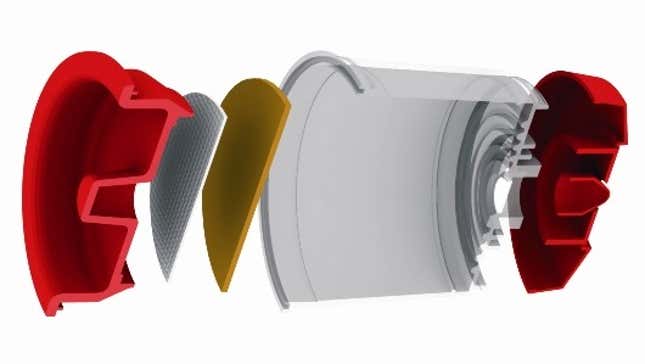
I ask Romano whether Starbucks would be better off serving its customers coffee brewed from capsules. “I think in many cases they would. Perhaps a large percent of their locations should be using capsules.” Romano also notes that while Illy still employs “baristi” in many of its 240 cafes in Europe, there are only eight Illy cafes in North America, mostly because it’s impossible to find baristi who have been trained to the company’s exacting standards.
I also asked Starbucks if it would ever increase the amount of automation it already uses in its stores. Linda Mills, a spokesperson for the company, would say only that it wouldn’t move in this direction because an automated barista would “diminish what we offer every day.”
What she means, presumably, is the experience of being served by a human being. But is that enough?
Will you want to drink robot coffee?
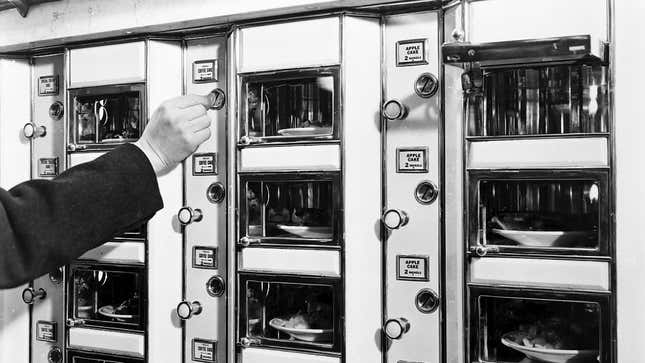
Briggo’s leaders assert that they are “fanatical” about coffee, and that automation is primarily an enabler that will, as Nater puts it, “allow us to get large fast.” Their recent hire of Starbucks vets who have backgrounds in sourcing, blending and inventing new and seasonal drinks is, they say, about making something that is the equal of any other “third-wave” coffee shop like Starbucks or Stumptown.
Generally automation in food service has meant first standardizing the foods to be prepared, which means robbing them of their individual character. Currently, Briggo sells only a single blend of beans from three countries. But there’s nothing stopping the kiosk from dispensing single-origin coffees and adjusting its every parameter to accommodate a new crop of beans, says Nater.
The Briggo coffeebot “can measure humidity and shock time and can automatically adjust the grind of the bean to compensate,” he says. “We have visibility with that bean. We track every single shot of espresso. We know if it’s within our quality spec, and we fully control the whole supply chain. We can go well beyond what a high-attrition part-time employee can do.”
Briggo doesn’t have to be better than the best baristas in the world. It just has to be better than the nearest coffee shop. Think of this not as the epic chess showdown between Garry Kasparov and the IBM computer Deep Blue; think of Briggo, rather, as the Redbox video kiosk to Starbucks’ Blockbuster.
If not the end of coffee shops, at least the dawn of a new kind of coffee culture
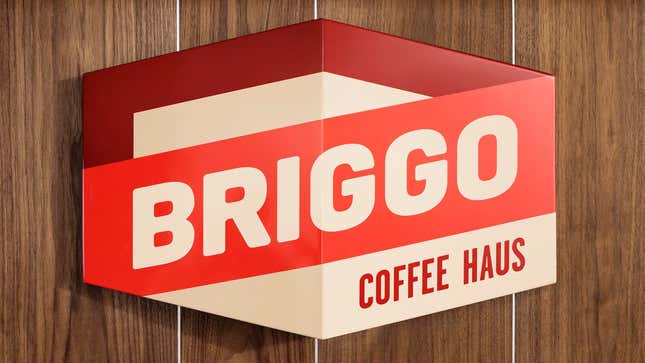
Still, there are limits to the Redbox/Blockbuster analogy. Blockbuster went into decline because it couldn’t offer anything that wasn’t offered by video kiosks or, more importantly, online-streaming services like Netflix. But as Romano of Illy points out, a coffee vending machine can’t reproduce the experience of a coffee shop. “Coffee is something social—do you really want to replace the social value of [your barista]?” he asks. And indeed, Nater told Melanie Kaplan of Smartplanet, ”We’re not asking people to stop going to coffee shops.”
But Briggo is hoping to at least displace Starbucks somewhat. Tim Kern, a 22-year veteran of Starbucks who joined Briggo in July, observes that some of the places where the company is scouting locations, like public areas in corporate campuses, are the sort where people might get both their social and their caffeine fix rather than trek to a nearby coffee shop. It’s not unlike the disruption of the PC industry by tablets and smartphones: these mobile devices haven’t replaced the PC, but they certainly reduce the number of occasions when you need one.
For now, a direct replacement for Starbucks—imagine a cafe with a host but no baristas—is not in Briggo’s business plan, though the company’s leaders have discussed it in the past, says Kern. (Romano is skeptical of such ideas: “We could go back to the 50’s, where you could go into the Automat, where you’d have those machines where you could get whatever you wanted, but what is the real value of that experience?” he asks.) The near-term plans are to move into places with bad coffee—think universities, hospitals, airports and corporate cafeterias—and improve the offerings. “With just 50 square feet we can create a barista-quality experience in a location where a coffee shop can’t have the economics to operate,” says Nater.
But here comes the competition

Barista robots are barely even a thing yet, and already the space is getting crowded. One company aiming for the lower end of the market is Marley Coffee, which in partnership with vending machine manufacturer AVT has developed “an Android-based coffee kiosk that comes with a full touchscreen automated checkout system,” says Joe Menichiello, vice president of sales and marketing at AVT.
One model sports a gigantic, 48-inch (122 cm) touchscreen. “You press the type of coffee you want, and specify how much sugar you want, and you swipe your card, and while it’s being ground and brewed for you, it’s playing Bob Marley music,” says Menichiello. Yes, Marley coffee is named for that Marley. ”Bob Marley is one of the top 10 most recognized names in the world,” says Menichiello. “From a branding standpoint it’s a no-brainer for us.”
AVT’s system isn’t nearly as sophisticated as Briggo’s—there is, for example, no expertly foamed, market-fresh milk here, just the powdered kind—but still, says Menichiello, “we’re grinding the beans individually for each and every customer. Ours will have that crema [the oils from coffee beans] on top that coffee won’t have unless it’s just been ground.” This, he says, “makes it almost better than at any brick-and-mortar coffee shop.”
The parts that go into a Marley Coffee kiosk are at this point standard enough that AVT expects to have plenty of competition. “Coffee is coffee and there are a lot of companies that follow the same model as us,” says Menichiello. “When we were at NAMA—the big vending convention in Las Vegas—I was looking around and there were a lot of machines where you could press a button and they’d do the bean to cup thing where it’s ground fresh for every customer.”
Indeed, one of AVT’s competitors is Starbucks itself. It already has a deal with Redbox to put coffee kiosks everywhere there’s currently a Redbox DVD rental kiosk, under the Seattle’s Best brand that Starbucks owns. These systems are actually built by Coinstar, which owns Redbox, and the machines go by the trade name Rubi.
But there are nonetheless different niches within the market. Starbucks’ kiosks tend to be aimed at convenience stores and supermarkets. Briggo is going after a higher-end customer. Marley Coffee sits somewhere in the middle, and is putting its systems into airports (where Briggo also has ambitions) and university bookstores.
It’s not a coffee company, it’s a technology company
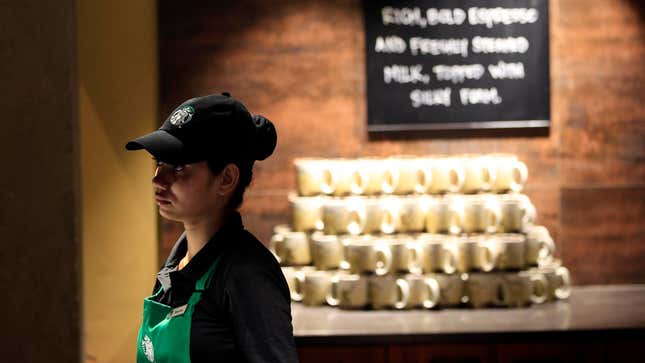
There are two ways for an upstart to disrupt an incumbent like Starbucks: One is to deliver a better experience, which Briggo’s leaders believe they can do through a combination of convenience and technological whiz-bang, and the other is to compete on price. A cup of organic coffee from the Briggo kiosk is $1.40, while a cup of drip (non-organic) coffee at Starbucks is $1.85 in many locations. The difference in price reflects, in part, the difference in the expense structure of the two approaches: Briggo doesn’t have to deal with the overhead of all that human labor, and at present it also doesn’t have to think about the cost of renting all that retail space.
Briggo has raised “in excess of $11 million,” says Nater, and while it has only “about 20 employees,” it has managed to stack its executive suite with with people who have deep experience in building and running technology companies that scale. Briggo founder Charles Studor was formerly the head of the billion-dollar integrated circuit division at Motorola/Freescale. The CIO, John Craparo, was formerly the CIO of GE Capital and Dell Financial Services. Briggo’s VP of engineering spent 25 years leading manufacturing projects at Johnson & Johnson. The Briggo kiosk is designed in collaboration with Deaton Engineering, which has created everything from battle-hardened PCs for the Air Force to industrial waste-bailing systems.
“Our aspirations are to build a global business,” says Nater. “We’ve had interest from the Middle East, North America and Asia. We think this model works very well in Asia where a mobile platform and automated experience has been adopted heavily.”
Two big unknowns loom over Briggo and anyone else trying to follow its lead. The first is whether or not people will, at least some of the time, accept a coffee kiosk as a substitute for a coffee shop, even if the product is the same or better. And the second is whether Briggo’s high-end machines can deliver a cup of coffee so much better that cheaper competitors like Marley and Seattle’s Best can’t crowd them out.
But it’s still early days. Starbucks itself was an example of how an evolving company can take a winding path toward finding its perfect market fit, says Kern. When Kern started at Starbucks, the company was still trying to be a “retail experience” designed to sell coffeemakers and beans. But customers kept coming in demanding a cup of coffee, so eventually it decided to change direction. “What Starbucks turned into is something I could not have conceived when it was just six stores,” says Kern.
It’s also worth noting that in a key sense, Briggo isn’t a coffee company. It would be hard pressed to beat all the others on the quality of its beans. Rather, it’s an automation company, whose special skill is in creating computerized robot systems than can be endlessly refined and elaborated. Which means that if another company were to try to acquire Briggo, rather than a larger coffee conglomerate or a food retailer, why not one that is all about the perfection of automated processes—like Amazon?
